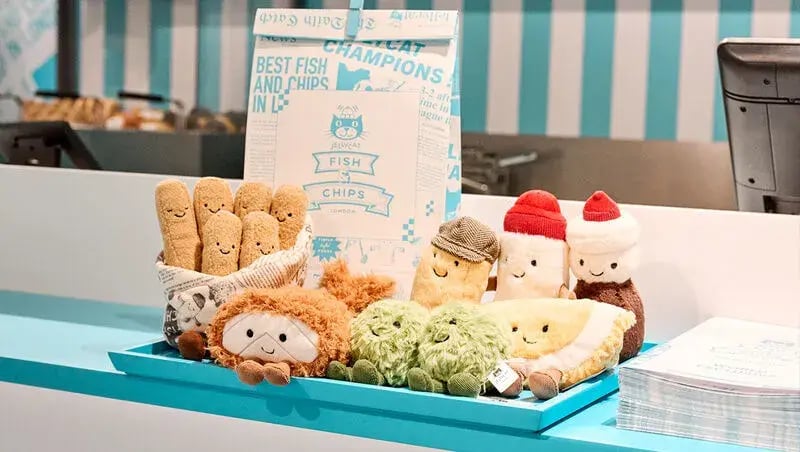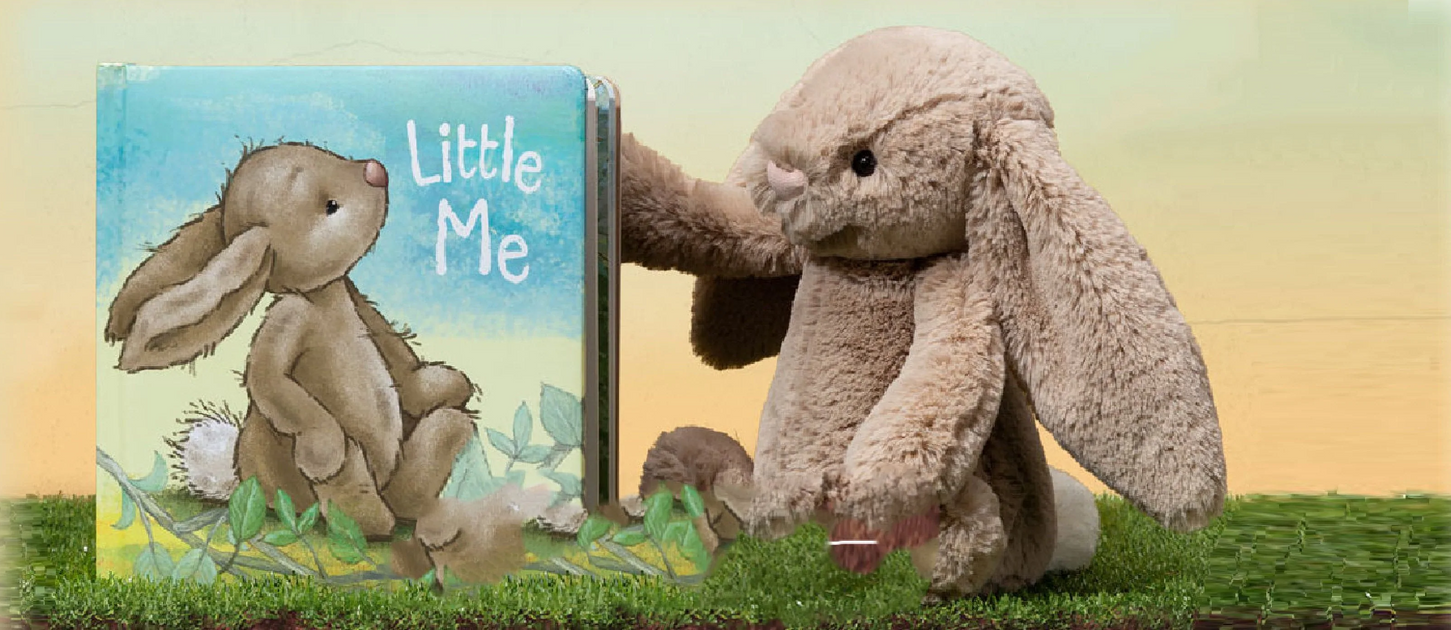
Jellycat was founded in 1999 in London by brothers Thomas and William Gatacre, originally targeting a niche in the plush toy market that combined quirky designs with premium quality. Their vision was to produce soft toys that stood out due to their unique style and luxurious materials. Initially starting with a small stall at trade shows, the brand quickly gained popularity and secured partnerships with prominent retailers such as John Lewis and Selfridges, which contributed to its early growth and recognition in the market[3][6].
By 2021, Jellycat expanded its operations internationally, opening a subsidiary in Minneapolis in 2001. This global reach has allowed the company to establish a presence across many markets, including the US, Europe, and Asia. As of the end of 2023, Jellycat reported revenue growth of 37%, reaching £200 million, largely attributed to its booming online presence and successful marketing strategies[1][9].
Unique Marketing Strategies

Jellycat's marketing strategy is centered around the emotional appeal of its products, focusing on comfort, nostalgia, and joy. The company has effectively tapped into broader consumer trends, particularly during the COVID-19 pandemic, where demand for comforting products surged. As consumers shifted focus to online shopping, Jellycat's revenue saw an impressive increase, showcasing its ability to thrive under changing market conditions[4][9].
To further engage customers, Jellycat introduced experiential marketing initiatives like the 'Jellycat Diner' and various pop-up cafes in major cities worldwide. These immersive experiences not only heightened brand visibility but also fostered community engagement and excitement. The pop-up concepts, which included thematic elements like a fish and chips shop in London and a patisserie in Paris, have proven successful in attracting significant foot traffic and have often gone viral on social media, amplifying the brand's reach[1][8][9].
Emphasis on Quality and Design

A cornerstone of Jellycat's appeal lies in its commitment to quality. The brand prioritizes the use of soft, luxurious fabrics and innovative designs that appeal to both children and adult collectors. This focus on high-quality materials has allowed Jellycat to differentiate itself from competitors in the plush toy market, leading to a strong following among both young and adult consumers. Jellycat's designs are often whimsical, featuring everything from plush animals to quirky objects like food items, further enhancing their collectability[6][7][9].
Moreover, Jellycat has effectively embraced the concept of anthropomorphism, giving their toys distinct personalities that resonate emotionally with consumers. This strategy not only helps forge strong connections with customers but also supports the brand's positioning within the lifestyle market, appealing to a wider age range than traditional toy companies[1][3].
Digital and Social Media Presence

In today's digital landscape, social media plays a vital role in Jellycat's marketing efforts. The company has cultivated a robust online presence, with extensive user-generated content from fans sharing their collections on platforms like TikTok and Instagram. This community-driven content has significantly enhanced brand visibility and engagement, creating a sense of urgency and collectability around Jellycat products. With over half a million followers on TikTok and a robust presence on Instagram, Jellycat has crafted a unique niche that allows customers to engage with the brand in personal and meaningful ways[9].
Jellycat's ability to adapt its marketing strategies to suit current trends has been crucial for its ongoing success. The brand continuously releases new collections, introducing around 200 new items each January and July, thereby maintaining excitement and interest among consumers[3][5]. Additionally, their focus on creating emotional connections through their products and marketing strategies has fostered lasting loyalty amongst customers.
Looking to the Future

Future initiatives for Jellycat include a continued emphasis on sustainability, with plans to implement environmentally friendly practices and materials within their operations. This focus not only aligns with evolving consumer values but also helps solidify Jellycat's reputation as a responsible brand in a competitive market[3][8].
In conclusion, Jellycat's journey from a small stall at trade shows to a leading luxury plush toy brand is a testament to its innovative designs, effective marketing strategies, and dedication to quality. By emotionalizing its product experience and leveraging community engagement through digital platforms, Jellycat has successfully carved a unique space in the plush toy market, appealing to a diverse consumer base across generations.
Get more accurate answers with Super Pandi, upload files, personalized discovery feed, save searches and contribute to the PandiPedia.
Let's look at alternatives:
- Modify the query.
- Start a new thread.
- Remove sources (if manually added).